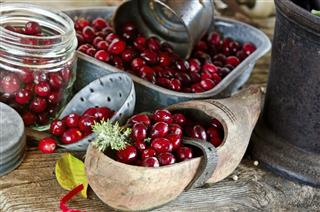
What causes lumps in breast? Are all lumps cancerous? How is a painful lump in breast evaluated and treated? Read the following article which explains causes and treatment of sore breast lumps…
A swelling, protuberance or lump in a breast can come and go, as the breast tissue responds to the hormonal changes. The woman may experience pain, when the lump is pressed gently. Sometimes, the lump may not be painful at all. Breast lumps can be noticed at all ages. A breast-lump in an adult woman can be a symptom of breast cancer, but it has been observed that most lumps turn out to be benign or non cancerous.
Causes and Treatment of Painful Breast Lump
Fibroadenomas: Fibroadenomas are noncancerous lumps in the breast. These lumps are rubbery and easily movable within the breast tissue. These are noticed often during the reproductive years. They are not tender to touch. There are very few chances that these lumps would become cancerous later. You should consult a doctor to confirm whether the particular lump is a fibroadenoma or not. A biopsy can confirm the type of lump.
Fibrocystic Changes: Fibrocystic changes can be observed in either or both breasts. Such changes are commonly noticed in women, during the reproductive years. The fibrocystic changes are regarded as normal variation of breast tissue. Having fibrocystic breasts does not imply that your chances of having breast cancer are increased. Women may feel tenderness in the breast. Consultation with a doctor is essential for evaluation of the lumps and bumps in the breast.
Cysts: Cysts in breasts are nothing but fluid-filled sacs that often feel like soft grapes. A painful lump in breast before period can be a cyst. Cysts can sometimes be painful, especially just before your menstrual cycle. Your doctor will examine and make the cyst drain. Clear or greenish fluid implies that no more treatment is required, provided the lump disappears completely. But bloody fluid is sent to the lab and is checked for cancer cells. If the lump recurs or does not completely go away, it has to be removed surgically.
Milk Cysts: A breast inflammation, usually caused by infection is known as mastitis. Milk cysts (sacs filled with milk) and infections (mastitis) can turn into an abscess. A sore lump in the breast during breastfeeding can be due to milk cyst or mastitis. Swollen, painful breast, burning sensation while breast feeding, redness and soreness around the nipples are some of the main mastitis symptoms. Antibiotics and pain relievers are prescribed by the doctor.
Intraductal Papilloma: Intraductal papilloma is the condition wherein a small growth inside a milk duct of the breast is noticed. This usually occurs near the areola, the colored part of the breast surrounding the nipple, in women belonging to the age group 35-55. In most cases, it is harmless and often not felt. A watery, pink discharge from the nipple is the symptom observed in a few cases. It is essential to consult your doctor as a watery or bloody discharge can also be a sign of breast cancer.
Breast Cancer: A painful lump in breast can be a symptom of breast cancer which is characterized by lumpy nodes that can be easily felt during palpation. The lump can even be painless. The inner lining of the milk ducts or lobules become dilated due to breast cancer. Soreness and tenderness are usually noticed in such cases. Breast cancer can be confirmed with the help of mammogram or ultrasound and a biopsy. Men also can get breast cancer. One should know the signs of breast cancer in young women, as the percentage of breast cancer patients is increasing day by day. In case of breast cancer, some part of the breast or whole breast is removed and chemotherapy and radiation therapy is recommended.
Numerous changes take place in a woman’s breasts during pregnancy. First of all, it is difficult to identify small lumps and lumps can also be mistaken for a normal change in pregnancy. Pregnancy doesn’t cause breast cancer, but the hormonal changes taking place in the body can accelerate its growth. Remember, if you notice a painful lump during pregnancy, it is unlikely to be breast cancer. But you should go through proper tests.
Other Causes: Lipoma, a collection of fatty tissue can cause a lump in a breast. Injuries to breast can lead to a collection of blood that feels like a lump. Lumps formed due to injuries can get resolved on their own in a few days or weeks. If not, your doctor may have to drain the blood.
The treatment of a breast-lump depends on its cause. If you notice a sore lump in a breast, you should consult your doctor immediately. This is necessary for prompt diagnosis. You can then opt for the best treatment. Avoiding excessive consumption of caffeine and chocolate, opting for balanced diet which can provide all the necessary nutrients, eating lots of fruits and vegetables, increasing fiber intake, limiting fat intake, performing exercises regularly, leading a stress free lifestyle, etc., are some of the simple remedies to prevent breast cancer. Limited consumption of alcohol, avoiding smoking can also help reduce the risk of breast cancer.
This HerHaleness article is for informative purposes only, and should not be used as a replacement for expert medical advice. Regular self checkup helps detect a lump in a breast. Every lump does not indicate breast cancer, but consultation with a doctor is essential for knowing the cause and nature of the lump.






